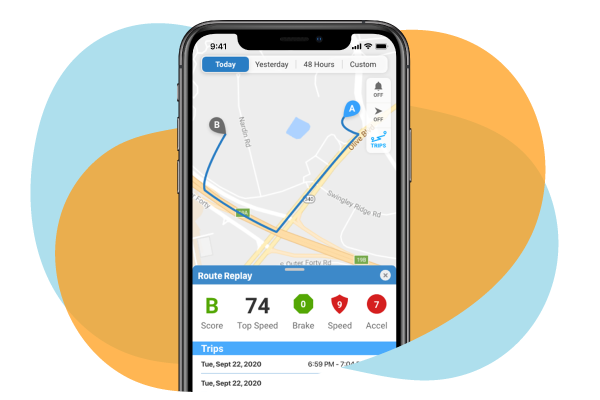
By Jana Rhodes / Posted August 1, 2016
Teaching Your Teen Driver to Share the Road
If you have a teen driver on the road, it is time to return to an old lesson: sharing. It has probably been some time since you had a conversation about sharing with your child, but their safety could depend on you having another one. However, instead of teaching them to share toys with other children, this time the conversation should focus on sharing the road with other drivers and pedestrians.
Sharing the road requires more than a polite attitude. There are certain skills that your teen must learn in order to safely share driving space with specific vehicles like large trucks, motorcycles, bicycles, and emergency vehicles. Following are some tips that you can use to educate your teen.
Big trucks
One of the most common safety hazards to driving near large trucks is the blind spot.One of the most common safety hazards to driving near large trucks is the blind spot. Remind your teen about their own blind spot that they have to check while driving their car. Then explain that the blind spot on a truck is much larger—if they can’t see the driver in the truck’s side mirror, then the driver cannot see them. Make sure they understand the importance of staying visible to the truck driver. They should also understand that trucks need more time and space to stop or change lanes, so they should leave plenty of room and drive at constant, predictable speeds.
Motorcycles and bikes
Just as large trucks need extra care and space, small vehicles like motorcycles and bicycles need the same attention. Because they are smaller, they are also harder to see. Your teen should know that this is one reason why it is important to visually check their blind spot before changing lanes. They should also understand that bicycles have the same rights on the road as other drivers, and they need three feet of room between their vehicle and other drivers.
Construction vehicles and road workers
Your teen is sure to encounter road construction while they are driving. Teach them to drive slowly and carefully around construction vehicles and obey any signs, both for their own safety and the safety of workers who might be standing near the road.
Emergency vehicles
Does your teen know the proper reaction to an emergency vehicle that is driving with active lights and siren? At minimum, they should know to pull over and slow down or stop until the vehicle passes. However, laws vary by state; for example, some states require drivers to move into the left lane if an emergency vehicle is stopped on the shoulder. Even if your state does not cite this as a traffic law, it is always a good idea for courtesy and safety.
Pedestrians
Although pedestrians aren’t other drivers, they share road space while walking along a street or crossing it. Pedestrians will always lose when they collide with a vehicle, so your teen should know to use extra caution and awareness at crosswalks and in intersections. The aftereffects of an accident can be devastating for the driver as well as the pedestrian.
Basic courtesy
There are some expectations about sharing the road that are just basic courtesy to other drivers. For example, dimming high-beam lights when other cars are approaching is an act of courtesy so that they can see the road better. Use of turn signals is also an important courtesy to those who are driving behind us. Remind your teen that a generous distance between their own vehicle and the one in front of them is safe but also polite. They should never tailgate another vehicle.
When you discuss the importance of sharing the road, be sure to point out that common courtesy leads to a safer driving environment for everyone. This is why it is important to keep emotions and distractions under control. Flaring tempers can lead to dangerous decisions and reactions. Monitor your teen’s behavior while driving. Do you notice that they get irritated by other drivers’ behavior? Are they quick to anger? It may be time to have a conversation about exhibiting patience and control while behind the wheel.
It is also important that they understand how to handle aggression from other drivers. Tell them to follow these rules:
- Do not react to gestures or other rude behavior from other drivers.
- Back off and give the aggressive driver room to “leave.”
- Do not engage aggressive drivers by trying to match speed, stop them from passing, or other actions.
- Never try to teach someone a “lesson.”
Considering others keeps everyone safe
Gracious driving, even toward those who make mistakes, can lower the chances of an accident. Understanding this is a step toward maturity with valuable lessons that will impact other areas of your teen’s life.

- Installs in seconds
- Rates driver performance
- Monitors safe driving behaviors
- Shows location in real time
- Generates alerts for speeding and more
- Signals unauthorized usage

Next Post
MOTOsafety Back-to-School Checklist
August 12, 2016The class schedule is printed and ready to go. You bought everything on the teacher supply list. The new fall fashions are hanging in your teen’s…
Previous Post
What to Teach Your Teen About Tire Safety
July 13, 2016Does your teen know how to maintain their tires? Driver’s Education programs offer great preparation and training for teen drivers. However, the…


